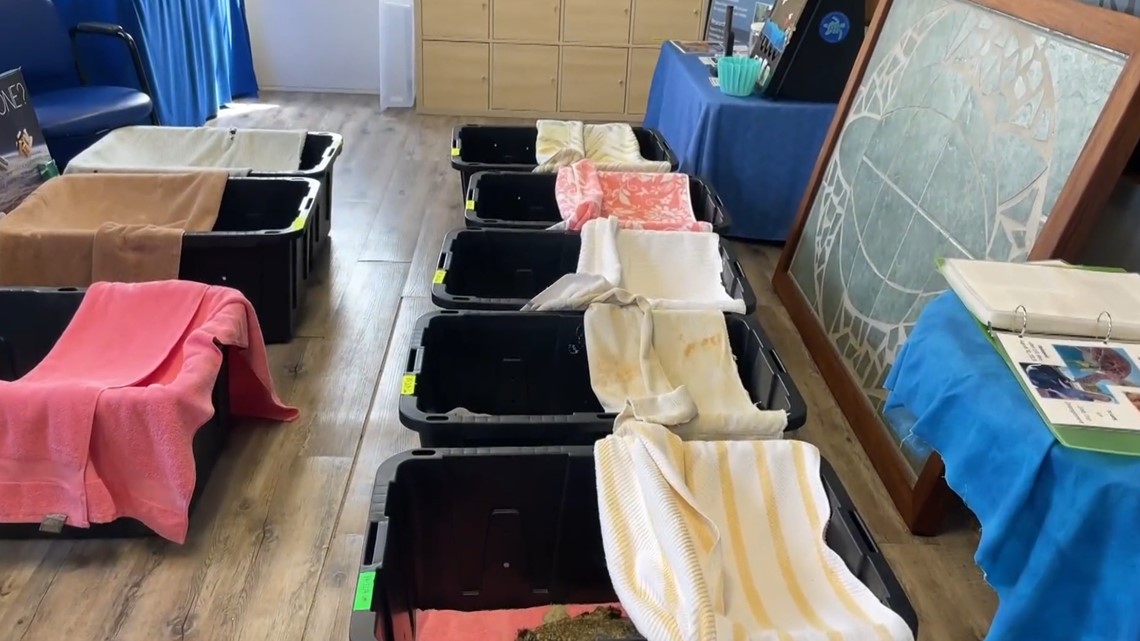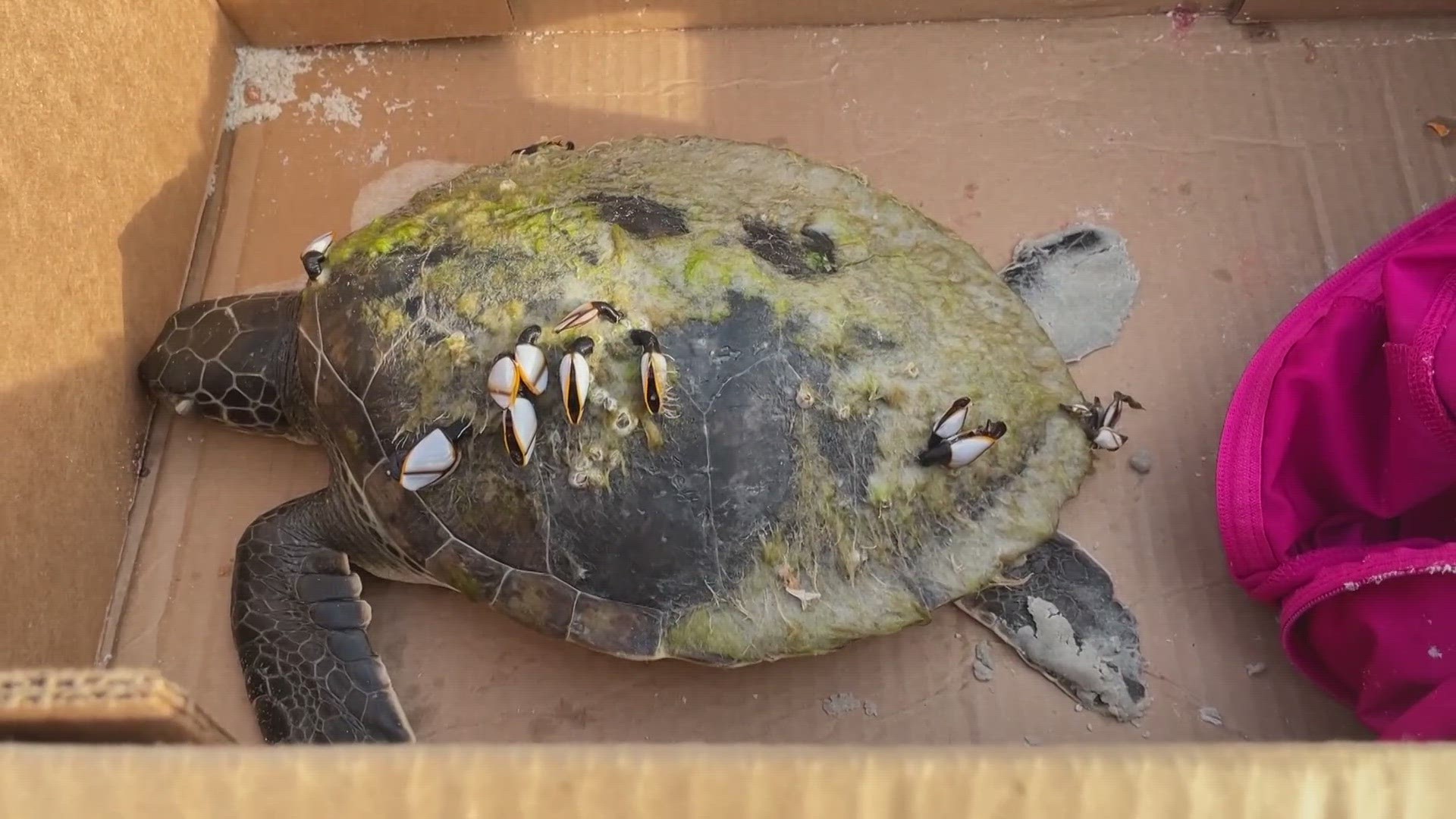ST. JOHNS COUNTY, Fla. — Tuesday morning, while walking on Crescent Beach, I saw a sea turtle on the shore. It was barely alive.
While I was calling authorities to get some help, I learned there is a much larger story taking place: There are more sea turtles than usual washing up in poor condition on First Coast beaches.
I notified St. Johns County Parks and Recreation and the Sea Turtle Hospital at the UF Whitney Laboratory in Flagler County.
The hospital director advised I take the turtle out of the waves and put her in a box. She was lethargic, about a foot long, and was missing a flipper.


A Sea Turtle Hospital intern came to pick her up. She said, "We got a turtle at 10 o'clock last night. We’ve got three coming from Ponte Vedra right now. One from Mickler's."
The Sea Turtle Hospital has been swamped this year with lethargic, hungry sea turtles covered in barnacles and other living organisms.
Sea Turtle Hospital Manager Devon Ramia looked around at the crates of sea turtles in what was the education room. She said, "They're not usually stacked up like this."
The education room has become a triage center because so many turtles have washed up on the shores.


"So it is normal for us this time of year to get these kind of crusty greens (names given to green sea turtles that have crustaceans or barnacles growing on them), but not to the numbers that we are getting this year," Ramia said.
The hospital has taken in 94 turtles in the first three months of 2024. That’s more than it had in all of 2023.
Jacksonville, Neptune and Atlantic Beaches are seeing more sea turtles wash up too.
"I would say it’s at least double," Jen Burns told First Coast News. She is the president of the Beaches Sea Turtle Patrol.
She explained the turtles are "what we call cold stunned, which means they're out there swimming, doing their migrating thing in the Atlantic. When temperatures reach a certain temperature, say about 50 degrees, they become hypothermic. And they're not able to swim well, or eat or anything like that."
But why are there so many more turtles now?
Burns' answer: "It's just the perfect storm of the cold Atlantic temperatures, the turtles from everywhere coming in, and all of the nor'easter winds that we've had, are just kind of blowing them all ashore."
As for the little one I found, she survived the trip to the hospital. I found her in the triage room where she had been cleaned up and was resting.
"And she looks pretty good, aside from what her blood values are," Ramia noted.
And the missing flipper? Ramia explained, "It's an old healed amputation site."
That means the turtle had already been at an animal rehab center in her life, and she is also tagged.
"So it's always interesting when you get tagged animals," Ramia smiled, "and you get to learn a little bit more about their backstory." A story, that now has another chapter in it.
If you find a sea turtle: call FWC, take a photo, and stay with it if you can until authorities arrive. The FWC number is 1-888-404-FWCC.

